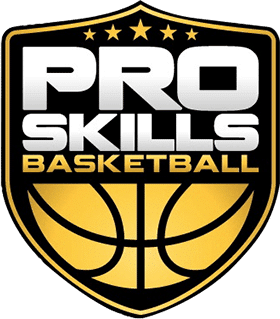
Understanding the Role of High School and AAU Basketball
In youth basketball circles, it’s common to hear people pit high school basketball and AAU basketball against each other—as if one is “good” and the other is “bad.”
More often than not, AAU basketball gets the criticism, while high school basketball is praised for being more structured or “traditional.”
But here’s the truth: both high school and AAU basketball offer value, and when done right, they should complement each other—not compete.
At Pro Skills Basketball, we’ve coached and worked with hundreds of players across both settings. And we firmly believe that both AAU and high school basketball play a vital role in player development and college recruiting.
Let’s break it down.
🏫 The Structure & Strengths of High School Basketball
High school basketball provides an environment that closely mirrors the structure of college basketball. This is one of the main reasons why college coaches care deeply about how players perform during the school season.
Here’s what high school basketball typically offers:
✅ Daily Practices
Players practice almost every day with their team, building chemistry, discipline, and a consistent training rhythm.
✅ Strategic Systems
Most high school teams run set offenses, defenses, and out-of-bounds plays. Players learn how to execute a game plan and adjust to different strategies.
✅ Scouting & Film
Coaches often scout opponents and provide players with scouting reports and film—just like at the college level.
✅ Game Spacing
Games are spread out (usually 1–2 per week), allowing players to rest, review film, and prepare with intention.
Because of this structure, college coaches use the high school season to evaluate how well a prospect fits into a team system and follows coaching instruction. If a player can’t succeed in a structured high school environment, it raises questions about how they’ll fare in college.
🏆 The Exposure & Experience of AAU Basketball
On the flip side, AAU basketball—also known as club or grassroots basketball—offers a very different, sometimes opposite, experience.
But “different” doesn’t mean “worse.” In fact, AAU basketball, when done right, offers huge benefits for players looking to improve and get recruited.
🔁 High Volume of Games
Most AAU teams play 4–8 games in a single weekend. This condensed schedule gives players more in-game reps and fast-paced learning experiences.
🧠 Player-Led Skill Development
Because AAU often lacks daily practices, it encourages players to take ownership of their individual development—whether that’s getting in the gym on their own, training with a skills coach, or attending camps and clinics.
👀 Massive Recruiting Exposure
During NCAA live periods, major AAU tournaments attract hundreds of college coaches. Why?
Because in a single weekend, college recruiters can:
-
Evaluate dozens of potential recruits in one place
-
See players in multiple games against quality competition
-
Build an initial recruiting list before the high school season begins
These tournaments are often the first step in getting noticed. But they’re just that—a first step.
After AAU season, many college coaches follow up by watching players during their high school season to assess how they perform in a more disciplined, structured system.
🤝 Why High School and AAU Basketball Need Each Other
So what’s the best path for a young basketball player?
BOTH.
High school basketball offers structure, coaching, and system-based learning.
AAU basketball offers reps, exposure, and unique developmental opportunities.
Together, they form a well-rounded experience that better prepares players for the next level—whether that’s college basketball or beyond.
When both are done right and with the player’s best interest in mind, they don’t conflict. They complete each other.
👨🏫 Coaches: Let’s Work Together
If you’re an AAU coach, make it a point to get to know your players’ high school coaches. Ask about the player’s strengths, weaknesses, goals, and off-court progress.
If you’re a high school coach, reach out to your players’ AAU coaches. Share how the player performs in a structured system. Celebrate what they’re doing well and offer insight into what they can improve.
It’s not about you or your program. It’s about helping the kids.
We all want what’s best for the players. So let’s put egos aside and collaborate.


 Finding the Right AAU Basketball Team
Finding the Right AAU Basketball Team »
»